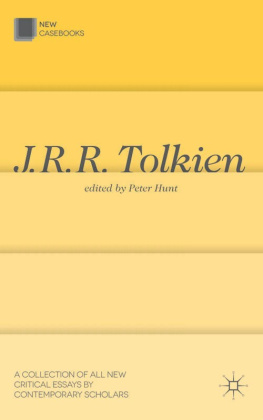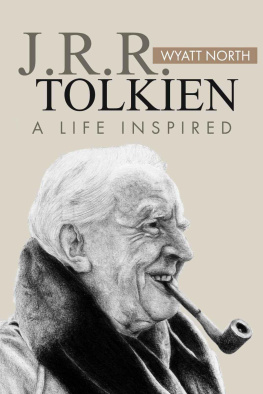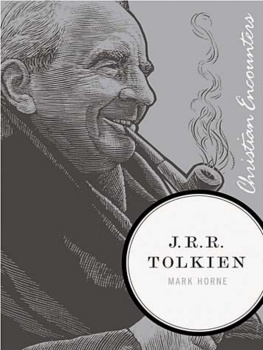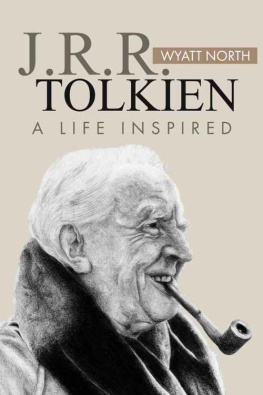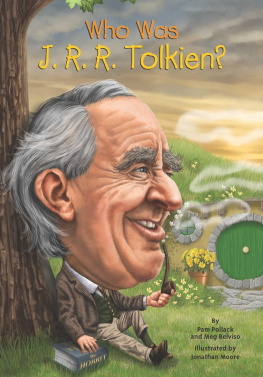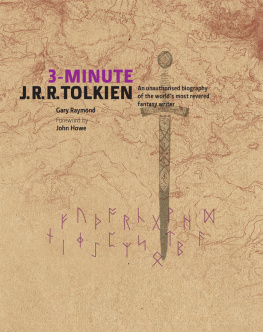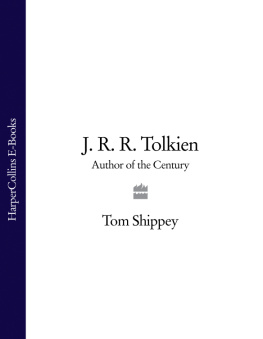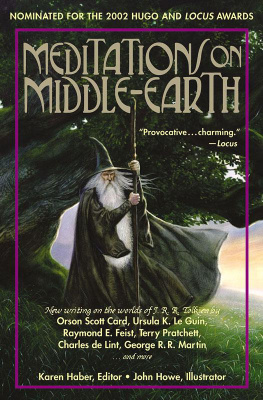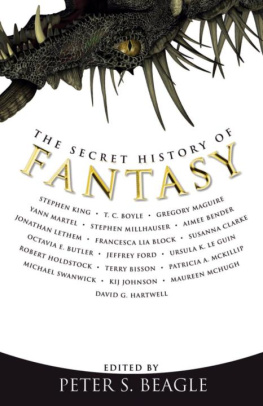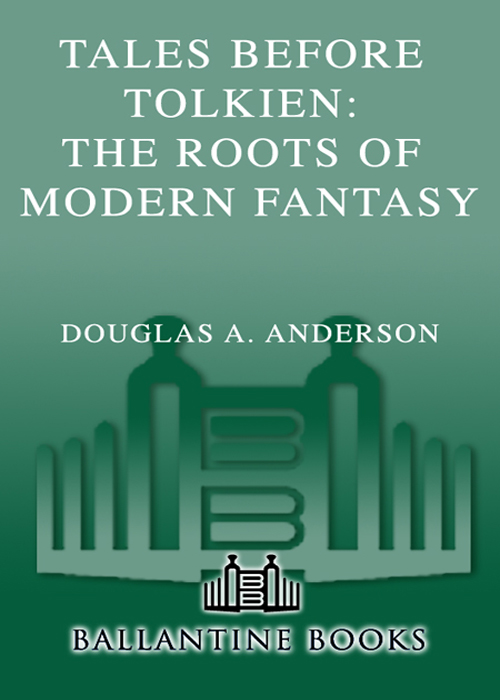
TALES BEFORE TOLKIEN
THE ROOTS OF MODERN FANTASY
Edited by Douglas A. Anderson

Ballantine Books New York
CONTENTS
To my sister Sue,
who introduced me to Tolkiens writings
ACKNOWLEDGMENTS
For assistance with various aspects of this anthology, I am grateful to Mike Ashley, David Bratman, Mary Ellen Channon, Joe DAmico, Joe Doyle, Verlyn Flieger, S. T. Joshi, Tappan King, Colin Manlove, John D. Rateliff, Ray Russell, Gordon Van Gelder, Richard C. West, Benjamin Wright, Nina Wyke-Smith, and Ted Wyke-Smith. A special thanks goes to David Underwood and Betsy Mitchell of Ballantine Books.
INTRODUCTION
For many readers, fantasy begins with J. R. R. Tolkien (18921973), the world-renowned creator of Middle-earth, whose history is recounted in The Hobbit (1937), The Lord of the Rings (195455), and The Silmarillion (1977). Fantasy literature, however, did not begin with Tolkien, though he developed it in a manner such that there exists almost a dividing line between fantasy written before Tolkien and fantasy written afterward.
The roots of fantasy extend back to Homers Iliad and Odyssey and on through the medieval literatures that were Tolkiens specialties as a professor at Oxford. The Anglo-Saxon poem Beowulf, which concerns a hero and his fight with monsters (including a dragon); the Arthurian romances, including Sir Gawain and the Green Knight (which Tolkien edited in Middle English and also translated) and those by Chrtien de Troyes; the medieval legends of Alexander the Great (who discovered the Trees of the Sun and Moon in the Far East, the inspiration of Tolkiens Two Trees in Valinor); and the Icelandic Eddas and sagas, these are the cornerstones of the medieval genre of heroic romance, with heroic exploits, quests, interlaced stories, and various intrusions of something beyond the naturalthat is, elements of fantasy. Tolkien himself followed in this tradition, and The Lord of the Rings, as its author rightly noted, is more properly called a heroic romance than a novel.
Tolkien also drew upon folklore and the folktale traditions, as they were recorded in the eighteenth and nineteenth centuries. After this process of the writing down of oral materials there naturally developed the German kunstmrchen, or literary fairy talesthat is, fairy tales artistically composed by a single author rather than stories merely recorded from oral tradition. From these folktales and fairy tales came the further development of fairy tales as childrens literature and, in addition, of fantasy as a mode of literature for adults.
It is from this latter tradition, beginning with the kunstmrchen, that this anthology derives. The stories are arranged in chronological order as to when each item was written. One of the criteria by which I selected stories for this anthology was that each item must have been written before The Hobbit was published in 1937. Another guideline that I have followed in a more general sense is that I have wanted each author to be at least slightly older than Tolkienthat is, not one of his contemporariesso I somewhat arbitrarily restricted myself to writers born at least five years before Tolkien. Some of the stories that I have chosen can be seen specifically to have inspired Tolkien, and these connections are detailed in the headnotes to the appropriate stories. I have also selected some stories whose content seems especially Tolkienian, even though there is little or no evidence that Tolkien knew the writers. And I have also chosen other stories that Tolkien almost certainly did not know in order to show some of the diversity of fantasy as it existed before The Hobbit.
This anthology begins with what is perhaps the best of the kunstmrchen, The Elves by Ludwig Tieck. German romantic fairy tales were a great influence on George MacDonald, and it was through MacDonald that the idea of literary fairy tales entered into English literature. In this anthology MacDonald, along with E. H. Knatchbull-Hugessen, Andrew Lang, E. Nesbit, and E. A. Wyke-Smith, represent British childrens writers. British adventure fiction is exemplified in the stories of H. Rider Haggard and John Buchan, while the literary side of British fantasy is seen in the selections by Richard Garnett, William Morris, Clemence Housman, Lord Dunsany, William Hope Hodgson, Kenneth Morris, Arthur Machen, and David Lindsay.
Examples of American childrens fantasy are found in the stories by Frank R. Stockton and L. Frank Baum. American adventure fantasy is represented by the tales of Francis Stevens and A. Merritt, while the selections by James Branch Cabell and Austin Tappan Wright exemplify more literary American fantasy.
I have kept my headnotes to the stories in this volume brief, intending them to serve more as guiding directions than as critical analyses. Background information on the various authors can be found in the notes at the end of the book, together with recommendations for further reading.
Tolkiens greatness lies in how he brought together the various existing strands of fantasyheroic romance, folklore, fairy tales, and adult fantasyand extended the scope of fantasy across the board in a historical as well as novelistic manner. Doing so brought a new depth to the genre, and Tolkiens elaborate history of three Ages of his invented world has raised the bar for his successors. To better appreciate Tolkiens achievement one needs to better understand Tolkiens own roots and the roots of modern fantasy. This anthology merely represents a first step in doing so, while making a number of fine stories, long unavailable, more easily accessible to readers who will enjoy them.
Douglas A. Anderson
November 2002
The Elves
by Ludwig Tieck
Translated by Thomas Carlyle
In his famous essay On Fairy-stories Tolkien wrote that Faerie is a perilous land, and in it are pitfalls for the unwary and dungeons for the overbold. Ludwig Tiecks story of the young girl Mary and her encounter with the Elves is one of the very best stories of the German kunstmrchen, or literary fairy tales. Here the otherworldly and perilous nature of Faerie that Tolkien later described is very evident.
The Elves was first published in volume 1 (1812) of Tiecks three-volume Phantasus. The translation into English by Thomas Carlyle first appeared in German Romance (1827).
Where is our little Mary? said the father.
She is playing out upon the green there with our neighbours boy, replied the mother.
I wish they may not run away and lose themselves, said he; they are so thoughtless.
The mother looked for the little ones, and brought them their evening luncheon. It is warm, said the boy; and Mary had a longing for the red cherries.
Have a care, children, said the mother, and do not run too far from home, and not into the wood; Father and I are going to the fields.
Little Andres answered: Never fear, the wood frightens us; we shall sit here by the house, where there are people near us.
The mother went in, and soon came out again with her husband. They locked the door, and turned towards the fields to look after their labourers, and see their hay-harvest in the meadow. Their house lay upon a little green height, encircled by a pretty ring of paling, which likewise enclosed their fruit and flower garden. The hamlet stretched somewhat deeper down, and on the other side lay the castle of the Count. Martin rented the large farm from this nobleman; and was living in contentment with his wife and only child; for he yearly saved some money, and had the prospect of becoming a man of substance by his industry, for the ground was productive, and the Count not illiberal.
Next page

